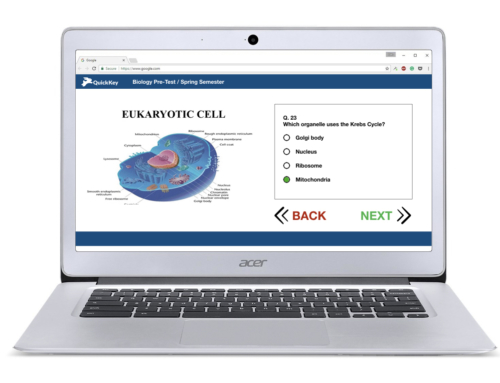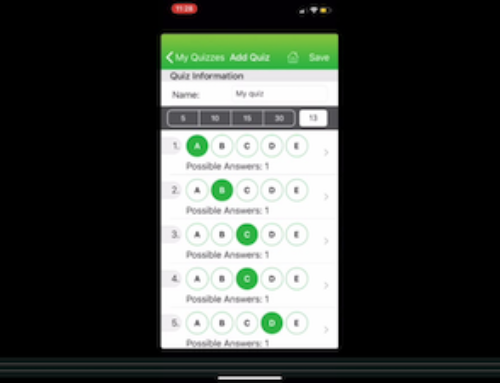Photo by NeONBRAND
What are Exit Tickets and Entry Tickets?
Entry and exit tickets are perhaps the easiest and straightforward way to get the benefits of data for informing and differentiating instruction, especially when you use an app to do them digitally. Put simply, Entry and Exit tickets are short prompts that can provide instructors with a quick student diagnostic. These exercises can be collected on 3”x 5” cards or small pieces of paper, or online through a survey or course management system.
What are Data-Driven Exit and Entry Tickets?
Data Driven Exit and Entry Tickets are ones that allow student responses to be collected, reported, and analyzed by software. Digital ‘tickets‘ such as those administered using online or mobile paper scanning tools are examples of Data Driven Tickets. Data Driven Tickets offer educators deeper insights in less time than verbal or written Tickets.
Why should I use Entry and/or Exit Tickets?
There are many reasons to use entry and exit tickets, from fostering student engagement to providing valuable guidance to both you – the teacher – and each student. Exit and entry tickets…
- Foster student engagement and participation of each student
- Prompt for students to focus on key concepts and ideas
- Offer a high return of information for the amount of time invested
- Provide important feedback for the instructor that can be useful to guide teaching decisions, such as course pacing, quick clarification of small misunderstandings, and identification of student interests and questions.
Quick Key was built for Data Driven Entry and Exit Tickets. Try it Free.
About Entry Tickets
Entry tickets are short formative assessments that are usually given at the beginning of a class or lesson. They focus student attention on the day’s topic or ask students to recall background knowledge relevant to the day’s lesson.
The many uses of Entry Tickets
There are academic and learning uses, but Entry Tickets can also be used for classroom management and to learn about other matters such as student engagement. For example, Entry Tickets can be used:
- To assess students’ prior knowledge about a new subject area that will be taught next
- To assess how much information students retained from a previous lesson
- As a classroom management strategy to get students organized and focused as they enter the classroom.
- As a quick survey tool to gain insight into the thinking of students about other school related topics.
How to build and administer entry tickets
- As you are planning your lesson, think about what “prior knowledge” students will need to know to effectively engage in classroom instruction
- Create a short 5 question multiple choice entry ticket with the focus on the information that you want “the students to know, be able to do, and retain”.
- Strategically place the entry tickets on students’ desks and instruct students on where to place them when they completed.
- The best entry tickets are data-driven and you should have an app that can give you an instant picture of what your students know, without having to hand-grade or read responses.
Sample exit ticket question concepts are as follows:
- Do students clearly know how to add numbers with regrouping?
- Do students have a clear understanding of the multiples of numbers?
- Do students have any prerequisite knowledge of multiplication facts?
- Can students do basic multiplication problems?
- Do students understand the connection between multiplication and division?
About Exit Tickets
Exit tickets help both you and each student understand whether or not they mastered the day’s lesson. This not only gives you valuable information you can use the next day, for homework, or for a study period later in the day. It also gives your students a reality check that is valuable to them and keeps them engaged.
How to build and administer exit tickets:
- After reviewing your lesson plan, select the most salient information from the lesson.
- Generate 5 short multiple choice questions with the focus on the information that students, based on the lesson, should have learned during the lesson.
- Exit tickets allow teachers to assess their teaching and determine what should be retaught, whether or not you need to create special groupings, or if there is a need to move on with additional content.
- Exit tickets should be given 5 minutes before the end of the class or at the end of formal instruction. Once students have completed the quick ticket, designate a place for quick tickets to be collected, as student leave the room or transition to another activity.
- The best Exit Tickets are data-driven. Score your tickets with an app and review the data to make decisions about follow-up teaching.
Sample concepts from which exit tickets can be created:
- Do they understand the concept of multiplication as repeated addition?
- Do they understand the multiples of a number? (Multiplication Facts)
- Can students complete 2 digit by 1 digit multiplication problems?
- Do they clearly know selected multiplication facts?
- Can they find the correct answers to multiplication problems?

About the Author
Marlon Davis is a school turnaround specialist who trains principals on leadership, parent involvement, change management, and data-driven instruction. A former teacher, school principal and charter school executive director in Cambridge, Massachusetts, Mr. Davis holds an M.Ed. in education leadership from the Harvard University Graduate School of Education.





